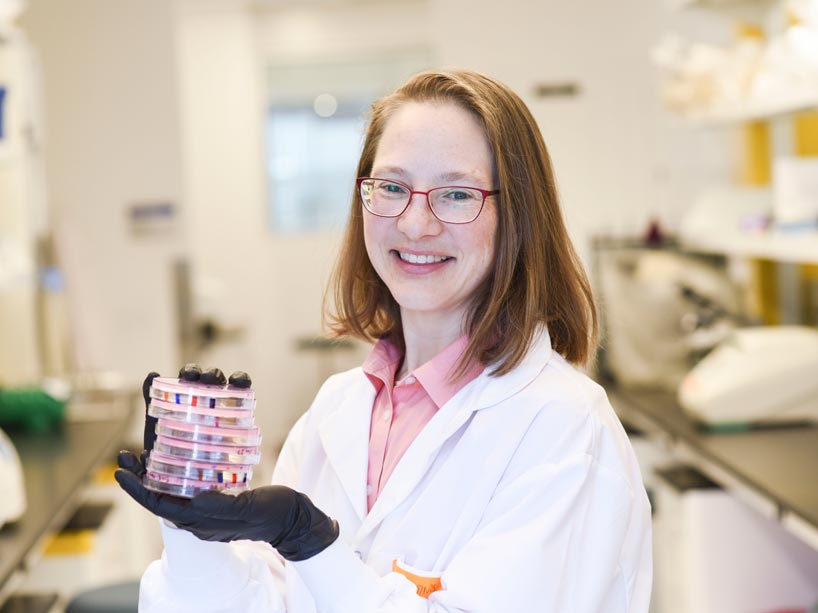Working to improve chemotherapy drug treatment in devastating cancers

Department of Chemistry and Biology professor Sarah Sabatinos in the lab.
There’s no getting around it, the statistics are chilling. According to Canadian Cancer Society figures (external link) , in 2017, an estimated 5,500 Canadians were diagnosed with pancreatic cancer. Of those, 4,800 ultimately died from the disease.
From her state-of-the-art lab in downtown Toronto’s MaRS Discovery District, Sarah Sabatinos, a professor in the Department of Chemistry and Biology, is seeking to improve those terrible odds. Among the projects currently underway in the Sabatinos Lab, she and her team of molecular science graduate students are analyzing DNA replication models, seeking to understand where chemotherapy treatment could be improved – particularly with high-mortality forms like pancreatic cancer.
Elaborating on the treatment challenges, Sabatinos says, with pancreatic cancer, chemotherapy treatment is tripped up by cancer cells’ adaptability. Her team’s recent project focuses on gemcitabine, a drug Sabatinos says is critically important with pancreatic cancers, as well as several other cancers.
“It’s one of really few options and the problem with it is that initially a lot of the pancreatic cancers respond to gemcitabine but then become resistant.”
The research aim, she says, is discovering what contributes to the development of such drug resistance and how to prevent it.
“We’re trying to figure out the molecular complexes and the changes that happen within an individual cell and across a population, then see if we can detect patterns.”
To hasten the progress here, Sabatinos has fostered a pretty unique collaboration – with Ali Mazalek of Ryerson’s Faculty of Communication and Design (FCAD). So what happens when molecular scientists and creative designers put their heads together? Basically, a fantastic giant laboratory canvas.
Tangible Chromatin 2018 (external link) from Synlab (external link) on Vimeo.
Sabatinos says, thanks to special FCAD tools, the rich datasets generated by her team’s algorithms get displayed across large wall screens and tabletop screens, and are also visually enhanced with special icons at “replication forks.” It all makes it easier for Sabatinos’ team to look for patterns. As she says, “It’s the display and the ability to collaborate. Because it’s so big and because we can move it around easily, multiple people can have input at the same time.”
This research, which used yeast to examine how specific cancer mutations respond to gemcitabine was recently published in a paper called, “A Chromatin Fiber Analysis Pipeline to Model DNA Synthesis and Structures in Fission Yeast (external link) .”
The next step, adds Sabatinos, will be to analyze responses in human cancer cells. Her team will also publish another paper soon, also related to cancer cell mutation.
The underlying motivation for her DNA investigations, says Sabatinos, are twofold. Beyond improving drug treatment, she says new discoveries about what causes mutant cells to replicate – or not – will potentially affect disease prevention as well. “If a cell or person has that mutation, what does that mean? What can we do to prevent a problem like cancer from developing?”
This story first appeared on the Faculty of Science website.